More about The Raising of the Cross
- All
- Info
- Shop

Contributor
The Raising of the Cross is proof that a young fella from Brussels can win a commission to paint a Catholic painting heavily inspired by the Italians.
This is what can happen if you know the right people, have some luck on your side, and have the skillz (with a z) that’ll make even the pope envious. Bow down to Peter Paul Rubens.
If I don’t say it now, we’ll all be confused later. There are two paintings titled The Raising of the Cross by Rubens. The triptych, painted in 1610-1611, is the altarpiece for the church of Saint Walburga, (now known as Antwerp Cathedral). The second painting that's shown here is a study of the triptych, hanging in the Ontario Gallery, painted in 1638.
There’d be no 1638 painting without the 1610-1611 original. Rubens spent a year painting the triptych. In the 1638 painting, Christ looks up into the heavens, searching for big poppa. The original painting had been surmounted by God the father, a pelican, and a couple of rowdy angels. Christ looks up at this strange group that is the opening to a joke (“God, a pelican and a couple of angels walk into a bar…”). The 1638 study has Christ staring up at the ceiling of an art gallery.
In 16th century Belgium, Rubens was a superstar of sorts. Doing double duties of diplomat as well as court artist. Rubens was his own cheerleader. Fully aware he was “the busiest and most harassed man in the world.” Zero cares to being humble. The Raising of the Cross is Rubens flaunting newly attained skills learnt during his time away in Italy. The Italian influence is prominent in the bulging muscles of these men, reminiscent of Michelangelo’s work, in the light and shadow, learnt by studying Caravaggio and Baroque art. On second thought, forget about being humble!
Hold on, back it up. Rubens didn’t get to be in the limelight on his own. Sometimes it’s good to know people, and let me tell you, Rubens knew people. He had supporters from silk merchants to the leadership of Antwerp’s religious communities. But a mister Cornelis van der Geest needs the spotlight. This man helped Rubens win the commission for the altarpiece, without which this spectacular oil on paper painting would never have existed. Snaps for Cornelis.
Sources
- ArtfixDaily, “A Survey of Early Rubens Traces His Rise to Fame Through Artistic Innovation – and a Mastery of Social Networking,” March 7, 2019. Accessed July 20, 2019 http://www.artfixdaily.com/artwire/release/4915-a-survey-of-early-ruben…
- Brown-Stapley, Victoria, “Exploring Early Rubens.” The Art Newspaper, April 9, 2019. Accessed July 19, 2019 https://www.theartnewspaper.com/gallery/early-rubens-in-san-francisco
- Kleiner, Fred S., Gardner’s Art through the Ages: A Concise Western History. Boston: Wadsworth Publishing, 2017.
- Kleiner, Fred S., Gardner’s Art through the Ages: The Western Perspective, Volume 2. Boston: Wadsworth Publishing, 2009.
- Lawrence, Cynthia. "Before the Raising of the Cross: The Origins of Rubens's Earliest Antwerp Altarpieces." The Art Bulletin 81, no. 2 (06, 1999): 267-296. http://ezproxy.slv.vic.gov.au/login?url=https://search-proquest-com.ezp…
- Logan, Anne-Marie S., Painter Peter Paul Rubens: The Drawings. New York: The Metropolitan Museum of Art, 2004.
- Milroy, Sarah. "Strokes of Genius?" The Globe and Mail, Sep 21, 2002. Accessed July 28, 2019 http://ezproxy.slv.vic.gov.au/login?url=https://search-proquest-com.ezp…
- Prodger, Michael, “Rubens, Rubens, Everywhere.” The Guardian, January 17, 2015. Accessed July 20, 2019 https://www.theguardian.com/artanddesign/2015/jan/16/peter-paul-rubens-…
- Robinson, William W., Anderson, Susan. Drawings from the Age of Bruegel, Rubens, and Rembrandt: Highlights from the Collection of the Harvard Art Museums. Cambridge: Yale University Press, 2016.
- Singing Palette, “The Elevation of the Cross (Raising of the Cross).” Accessed July 28 2019, https://www.singing-palette.org/Oil-Painting/The-Elevation-of-the-Cross…
- Taylor, Robert, “Early Peter Paul Rubens Paintings in Legion of Honor are not Exactly Timid.” Marin Independent Journal, May 22, 2019. Accessed July 20, 2019 https://www.marinij.com/2019/05/22/early-peter-paul-rubens-paintings-in…
- Walsh, Colleen, “Drawing Power.” The Harvard Gazette, May 19, 2016. Accessed July 20, 2019 https://news.harvard.edu/gazette/story/2016/05/drawing-power/
- Webster-Cook, Sandra, Suda, Alexandra, Helwig, Kate, “(Paintings) Research and Conservation of Peter Paul Rubens, The Raising of the Cross, oil on paper, 1638.” AIC’s 46th Annual Meeting, May 31. Accessed August 13, 2019. https://aics46thannualmeeting2018

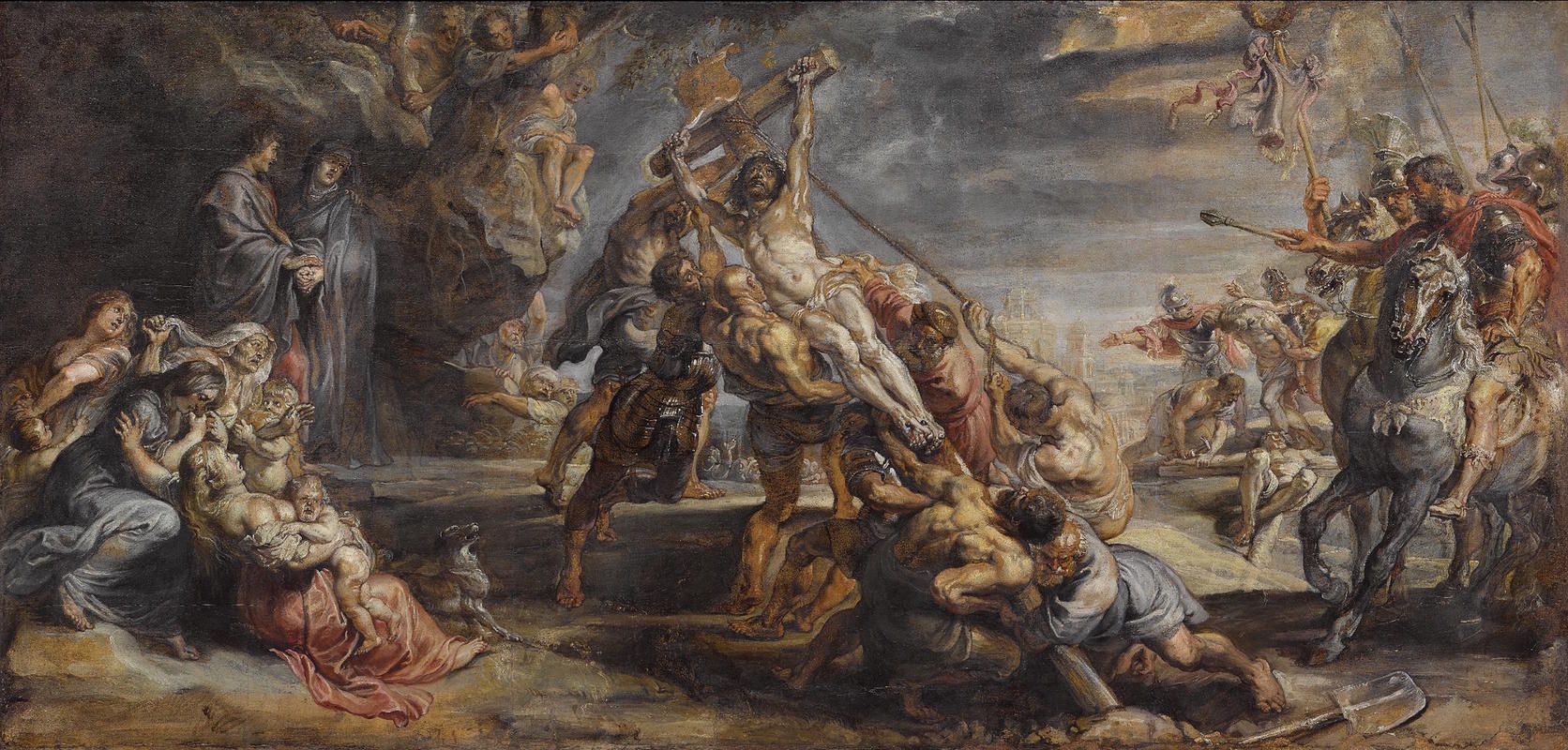

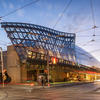
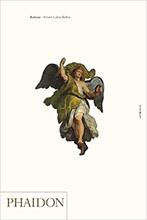
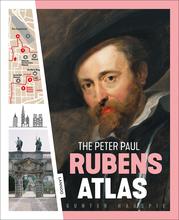
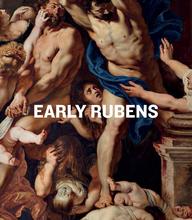










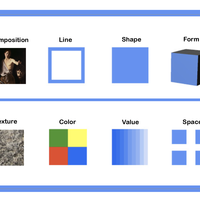
I like this one doesn't only because it's about Jesus, but for the structure and the composition, we can see it vivid. For the people who raising the Cross are lively, they are presented in different actions. Through the lines in their back, the cross must be really heavy for them.